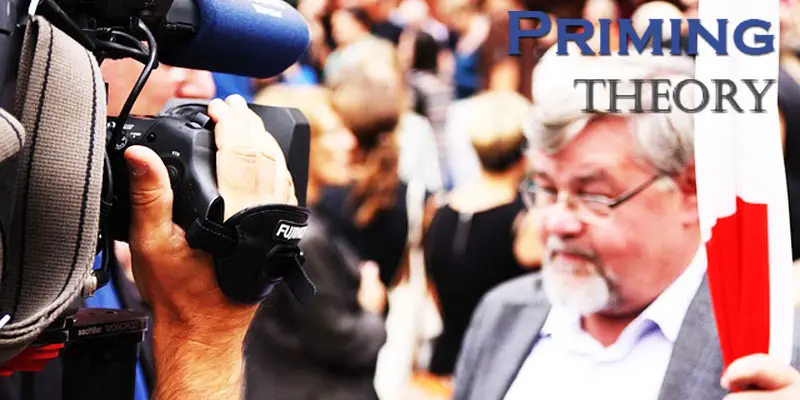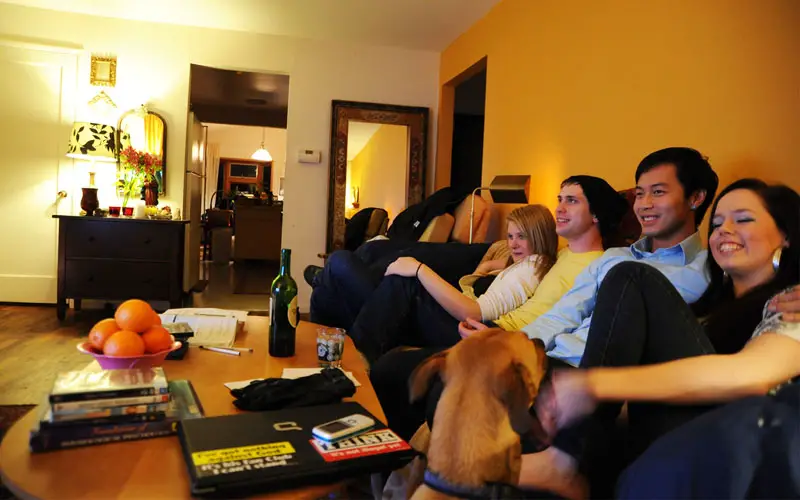Priming theory, which is considered to be the predecessor to agenda setting theory, is about the media effect on audience’s decision making, like agenda setting. It is also taken as an effect of agenda setting as priming is done before setting an agenda. Priming provides basic perception and relative comparison, which makes judgment easier and quicker. The preconceptions are used for as frame of reference for decision making. The theory was promulgated by Iyengar, Peters and Kinder in 1982.

Priming theory talks about the process of how media images control the mind of audience in a psychological way. The theory has its roots in associative network model which is about human memory in cognitive psychology. Every idea or information is stored in memory as nodes which form a network with related information. The network and memory path is semantic paths. When a node of a network is activated, priming occurs. The network activation acts as a filter in interpretation, understanding and judgment process.
Concepts in Priming Theory
Agenda setting theory only points out the importance of any news, whereas, priming theory explains the psychological process and brain patterns that show the way information is stored in the memory, media triggered specific nodes, how nodes or networks are formed and how the information influences the person in many ways.
When a new information is to be given to public, the first instillation of it is the most important as the same information will be taken as source of reference to another.
Priming happens in everyday life of every person. Words, which a person comes across frequently, are more noticeable to him/her. Media affects increases if it has a prior context. But media acts as a source of priming which causes problems and influences people gravely by spending more time on a particular issue.
Media can change the way a person behaves, acts, judges and makes decisions. But, the effects is only on some specific aspects of a person’s life. If an issue is taken by the media as important, majority of people who are familiar with it also think of it as important. The headlines of news or newspapers create greater impact than other parts of news as filters are made from prior experiences of any person and information is provided strategically by the media.
Many researches are being done to know the impact of violent and sexual behaviors shown on TVs and other media. Similarly, political priming is also being researched by many, as the only information about politics people get is through media. The coverage of different issues like energy, defense, economy, etc. determines the people’s perception in those matters. Media makes some issues salient than others. The effect of priming is more on people who follow the issues ardently and works by setting a stage before the actual entry.
Media priming happens as mental models or situational models. Mental condition or situational context creates and encourages priming effects.

Types of Priming
There are three types of priming which are most common. They are:
- Violence Priming:
People who watch television programs with more violence, are more violent. - Political Priming:
Media can influence public opinion on many important issues and change evaluation criteria. - Stereotype Priming:
Media can prime gender, race, religion and ethnicity stereotype which can influence perception and political judgments accordingly.
Characteristics of Priming
Two characteristics of priming are:
- Recent prime creates greater effect. More frequent or longer prime causes more effect.
- Prime decreases with time, starting from 15 to 20 minutes.
Examples of Priming Theory
Children tend to mimic what they see on television, which is how the process of priming takes place.
Jacobs and Shapiro analyzed Kennedy presidential campaign in 1960 extensively. The study found that people based their voting opinions on their views of Kennedy formed through media before the election with the help of public opinion surveys. The campaign managers used media as a tool to influence people.
Such studies were conducted during the presidency election during the time of Carter as well as Bush. Not only in U.S., but the theory has been tested in other countries like Israel, Germany and Denmark too. Big events like Olympics and World Cup are reported so much that people find it difficult to ignore such events. But media doesn’t provide people with all the information to make a good judgment.
Criticisms of Priming Theory
- Government or powerful people can bend information to their favor by priming.
- It can be used to establish false or distorted reality.
- People are influenced unknowingly.
- Priming can even affect the voting patterns of people in elections or establish opinions on any issue.
- Priming degrades with time.
